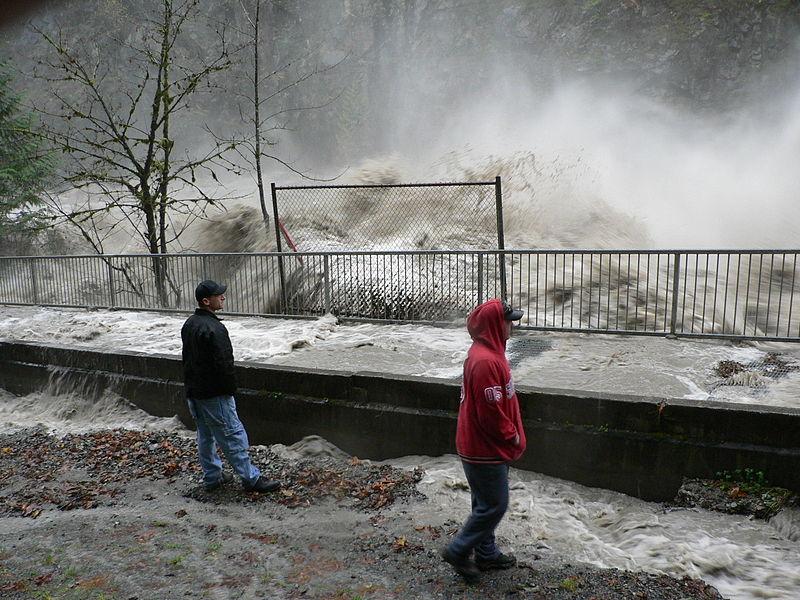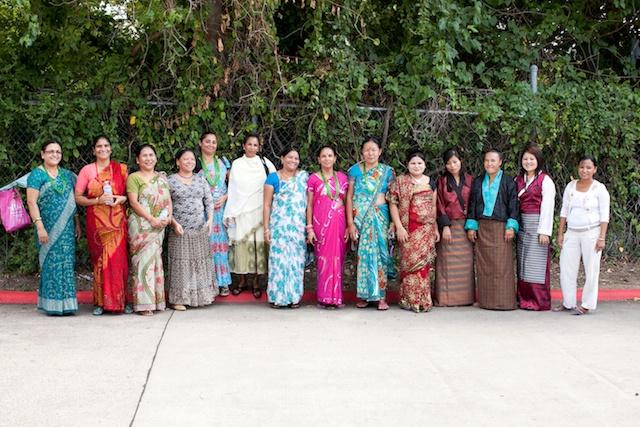Mars commits to fully sustainable palm oil by year-end


American candy giant Mars is to develop a fully traceable pipeline back to known palm oil processing mills by year-end 2014.
The policy is at the forefront of the business' strengthened commitment to tackle deforestation, and further supported by the launch of its new deforestation policy. In addition to palm oil, Mars will also focus on other raw materials that have the greatest impact on forests: beef, pulp and paper, and soy.
"Rapid expansion of palm oil plantations continues to threaten environmentally sensitive areas of tropical rainforest and carbon-rich peatlands, as well as the rights of communities that depend on them for their livelihoods. We have recognized that even though we have already implemented a 100% certified supply of Palm Oil this is not enough," said Barry Parkin, chief sustainability officer.
As part of the policy, Mars has introduced a new sourcing charter that will require all its suppliers to have a fully sustainable and traceable palm oil supply across all their operations by the end of 2015 (or to have plans in place by the end of 2015 for doing so) and to have confirmed their commitment to the principles in its sourcing charter by the end of this year.
In addition, Mars has become a member of The Forest Trust (TFT), a global non-profit organization focused on the delivery of responsible products. All TFT's palm oil members are companies that are committed to traceable, No Deforestation palm oil. TFT field teams will work with Mars suppliers in mills and plantations to help them build traceability and verify that their fresh-fruit bunch supply, including supply from smallholders, meets Mars' sourcing charter.
Fair Trace Tool Makes Supply Chain Transparency Fashionable


Image: Women artisans who work in INDIGENOUS' supply chain.
By Matt Reynolds
Fashionistas now, for the first time, can see beyond clothing labels with the Fair Trace Tool developed by my company, fair trade fashion retailer INDIGENOUS along with Worldways Social Media. This new tool, a QR code on hang-tags, offers transparency throughout the garment’s supply chain, including a glimpse of the artisans who actually made it and insight into the product’s social impact. The content is delivered in text, video and animated map format.
We founded INDIGENOUS on the principle that great design starts with paying workers fair wages, having fair working conditions and using materials that do not harm our environment. As my co-founder, Scott Leonard, CEO of INDIGENOUS says, “No one should suffer or die to make clothing. Just the opposite – they and their families should prosper. That’s how it is with our supply chain. That’s how it can be with others. Let’s not make this harder than it is.”
The global fashion industry is a trillion-dollar business, rampant with social and environmental injustices. Child labor, slave labor and hostile working conditions exploit workers. Pesticides used in cotton fields and toxic dyes used in yarns and fabrics devastate lives, land and water. The good news is that we can do something about it.
Collaborating for a better future
We at INDIGENOUS hope that 2014 is the year of collaboration. As brand leading manufacturers, we must collaborate and share best practices, even as our earth’s natural resources are being depleted. Yes, there are solid efforts being made by such organizations as the Sustainable Apparel Coalition, which has made great strides to accelerate the implementation of the Higg Index into the apparel industry. Fair Trade USA, the Ethical Fashion Forum, The Source, Fashion 4 Development, and Fashion Revolution Day are all working toward this same goal. However, these organizations alone cannot accelerate change or bring transparency to the fashion industry fast enough to make a significant dent in the huge trillion-dollar fashion machine.
Our consumptive standard of living, especially in the U.S., is exhausting precious natural resources in record time and has unnecessarily killed thousands of innocent hard-working people. Fossil fuels, formed millions of years ago, have been pulled from the earth at exponential rates, past their tipping point, in just the last 200 years. We are living in an unsustainable “energy orgy.” Look around you. I would bet most every object in the room around you has been derived from or involves fossil fuels in some manner. Your clothing is not excluded. Approximately 8,000 chemicals are used to make a typical item of clothing… not to mention the incredible injustice in terms of human rights and worker safety. Yet we choose not to see.
On April 24, 2013, the collapse of the Rana Plaza Building, just outside of Dhaka, Bangladesh’s capital city, killed more than 1,100 garment workers. In November 2012, 112 factory workers died in the Tazreen factory fire in Bangladesh. Then, on Dec. 1, seven people died and others were injured in a fire that destroyed a garment factory and its cardboard dormitory that housed workers in the Italian town of Prato, in Tuscany. Each month, more tragedies like this happen that are not reported. When are we gong to join forces to keep this from occurring again and again? Now, imagine if the companies who produced clothing in these factories were in constant, direct contact with the workers and shared their supply chain transparently with consumers. All of these tragedies could have been averted.
I believe it is not a matter of “if,” but of “when” our consumption habits and global system of economics will be forced to change. Clearly, we are not living sustainably. The interconnectivity of Energy, Economy and Ecology will be realized when our current system hits a wall. But why wait until our hands are forced, when we can use the amazing tools now available to do the right thing and start working together to share solutions available today? INDIGENOUS is calling on all brands to cooperate to shift production habits and share best practices so that we can turn this massive ship of fashion in the “humane and planetary” right direction.
Embracing supply chain transparency: The Fair Trace Tool
The Fair Trace Tool engages our end customers in the lives of our artisans and gives them insight into the social impact of an INDIGENOUS purchase. At the same time, the back end of the Trace Tool allows us to communicate directly with our artisan producers at the BOP (base of the pyramid) via cell phone-based voice and text technology.
While it is arguable that the proprietary Fair Trace Tool represents a distinct competitive advantage, INDIGENOUS is ready to share it to help save lives and promote industry collaboration, thus improving the well-being of artisans and garment workers everywhere. This is not the time to be exclusive. To bring change, we must take an inclusive and open-source approach.
Heather White, global labor expert and founder of Verite, which monitors global working conditions, commended us for improving the lives of workers in the company’s supply chain: “All over the world workers are paying the price for the clothes we wear. Environmental cost is also not factored into our purchases. The Fair Trace Tool offers consumers an opportunity to better align their belief systems with the purchases they make.”
The question is: When are we as consumers and brands going to take full responsibility for what we buy and what we make? The U.S. currently represents less than 5 percent of the global population, yet we consume almost 30 percent of the world's apparel.
The continued implementation of The Fair Trace Tool within the INDIGENOUS supply chain is exciting for us, our customers and the apparel industry as a whole. So far, the tool has provided the company with a new data set that facilitates internal analysis of its social impact and progress over time. The data shows that most artisans in the INDIGENOUS supply chain are now living above the poverty line. The percentage of those who are at risk has fallen since 2011. Also, the majority of artisans continue to feel satisfied by their jobs.
Through these efforts and with rigorous environmentally responsible standards, a brand can guarantee a sustainable product to their customers and at the same time influence purchase decisions and brand loyalty. Ultimately, we want to share our best practices and supply-chain transparency tools with any fashion brand that is striving to improve labor conditions, implement sustainable manufacturing practices and enhance communication with customers.
Image courtesy of INDIGENOUS via Facebook
Matt Reynolds, President & Co-founder of INDIGENOUS, is an ardent advocate about the positive power of business for the benefit of people and the planet. He has been a pioneer in the areas of fair trade, organics, environmental practice and the sustainability movement. He has worked for over twenty years in bringing together organizations around the world and helping to create numerous collaborative initiatives. His passion and dedication have firmly established him as a leader in the global organic and fair trade movement.
CSR Lessons From Mobile Industry's 'Kill Switch' Opposition


You love your cell phone and can’t spend a minute without it, right? If the answer is yes, here are three facts you should be aware of.
First, in 2012 1.6 million Americans were the victims of smartphone-related crimes. Second, one in three robberies in the U.S. include the theft of a mobile device. Third, cell phone thefts are now the single biggest source of property crime in many American cities.
In other words, not only is your beloved phone in danger of getting stolen, but it can also get you into trouble, from being the target of a robbery to even getting murdered in some cases.
Is this inevitable? Not necessarily, according to a growing number of policymakers and law enforcements officers. They believe consumers deserve better and that a "kill switch" that would make smartphones useless when stolen is the best solution to the "epidemic of violent smartphone thefts,” as New York Attorney General Eric Schneiderman calls it.
But not everyone is convinced a kill switch this is such a great idea. Take, for example, the wireless carriers. They believe that there are better ways to take action against smartphone theft. Last year CTIA, the carriers’ trade group, launched a national phone-tracking database, and it supports tougher penalties for smartphone thieves.
“We encourage consumers to use currently available apps and features that remotely wipe, track and lock their devices in case they are lost or stolen, and our members are continuing to explore and offer new technologies to address these crimes, while not inadvertently creating a ‘trap door’ that hackers and cybercriminals could exploit,” CTIA said recently in a statement.
While the CTIA would probably like to frame this debate as a discussion between experts about the effectiveness of different measures or security issues, others see an entirely different issue at stake here. New York's Police Commissioner William Bratton made it very clear earlier this month, saying the reason the mobile industry hasn't already adopted a kill switch is because of “corporate greed."
"Profit. That's what this is all about," Bratton said. "They're making $30, $40, maybe $50 billion dollars a year on new phone sales ... They're making a fortune on this. And they don't want to lose it.”
This is not just about sales of new phones, but also about keeping expenses low in the case of the wireless carriers. Lawrence Pingree, research director for market researcher Gartner, told SFGate.com that wireless companies see an all-out push against theft as too expensive. "The main goal for carriers is to keep support costs low and encourage subscribership, so antitheft technology could cause support nightmares," he said.
When you think about it this debate is actually about corporate social responsibility (CSR) and more specifically it is about the limits of CSR. On the one hand you have Bratton, Schneiderman and other officials who believe that cell phone manufacturers and wireless carriers have a responsibility to their customers to reduce the risk of smartphone theft.
On the other hand smartphone manufacturers and especially wireless carriers seem to believe that it is definitely an issue they shouldn’t ignore, but at the same time they believe it is not reasonable to expect them to take costly measures to handle a problem they believe to have a little control on.
I make here a distinction between manufacturers and carriers, as manufacturers seem to be somewhat more open to the implementation of a kill switch. Last December, SFGate.com reported that Samsung “has developed just such a feature for its mobile devices, but the Korean company has hit a snag. U.S. wireless carriers won't sell their products if they come loaded with the disabling feature.” Apple has also introduced a kill switch-like feature on its iPhones, as part of the iOS 7 update.
Still, in the case of both cell phone manufacturers and wireless carriers, it seems that for a long time their profits had (and in the case of the carriers still have) a higher priority than reducing the risk of phone theft. It shows you that when push comes to shove even companies that consider themselves to be responsible, like many of the companies involved in this debate, choose their financial bottom line over responsibility.
Let’s leave for a second the debate if there’s something wrong about framing these situations as cases of these "either/or" decisions, as this story leaves us with two lessons that I find even more important.
First, it once again demonstrates that in general companies can no longer decide what the limits of their responsibility are – their stakeholders do it for them. In this case these are regulators in states like California and New York and Senators in the U.S. Senate who introduce new bills aimed to ensure manufacturers and carriers take action and adopt/enable the use of kill switch. It already proved effective in the case of some of the manufactures, and it will probably prove itself eventually to be effective also in the case of the carriers.
The second lesson is that this story is an example how far we are from a culture of durability. In an environment where a cell phone is replaced every couple of years at best, it might be easier for everyone -- from the manufacturers to the carriers -- to expect that consumers won’t make such a big deal about a stolen phone. And we have to admit that they’re probably right – after all, we haven’t seen consumers loudly demanding better solutions.
If the manufacturers and the carriers were in a durability mode, the kill switch or any other similar solution would have been a no-brainer. But as long as they believe that profit maximization and durability are at odds, what we get is business as usual. This will change only when one of the main players or the consumers decide it’s time to change the rules.
Image credit: Marjan Lazarevski, Flickr Creative Commons
Raz Godelnik is an Assistant Professor of Strategic Design and Management at Parsons The New School of Design. You can follow Raz on Twitter.
Cut the Cord On Your Utility? It Could Be Possible Sooner Than You Think


With performance improving, production volumes rising and costs on the decline, intelligent battery storage systems may provide the missing piece of the clean energy puzzle, enabling customers to cut the cord linking them to utility grids and ushering in the end of the centralized electric utility business model.
Analyzing regional scenarios across the U.S., the Rocky Mountain Institute (RMI), CohnReznick Think Energy and HOMER Energy concluded that utility grid parity for the combination of solar photovoltaic (PV) and battery storage systems is “already here in some areas and imminent in many others for millions of U.S. customers.”
The combination of solar PV and battery storage technologies – what the authors of “The Economics of Grid Defection” dub “utility-in-a-box” – can make "the electric grid optional for many customers – without compromising reliability and increasingly at prices cheaper than utility retail electricity.”
Solar PV and battery storage: The "utility in a box"
The report's authors draw three main conclusions from their scenario analysis:
- Solar-plus-battery grid parity is here already or coming soon for a rapidly growing minority of utility customers, raising the prospect of widespread grid defection.
- Even before total grid defection becomes widely economic, utilities will see further kWh revenue decay from solar-plus-battery systems.
- Because grid parity arrives within the 30-year economic life of typical utility power assets, it foretells the eventual demise of traditional utility business models.
Significantly, according to the authors of “The Economics of Grid Defection,” nationwide grid parity for the combination of solar PV and battery storage systems is likely to occur “well within the 30-year planned economic life of central power plants and transmission infrastructure.”
“Even before mass defection, a growing number of early adopters could trigger a spiral of falling sales and rising electricity prices that make defection via solar-plus-battery systems even more attractive and undermine utilities' traditional models.”
The results of analyzing four cases across five representative regional scenarios present electric utilities with a stark choice: Adapt to the emerging distributed clean energy infrastructure or face the “utility death spiral.” According to the report authors:
“New market realities are creating a profoundly different competitive landscape as both utilities and their regulators are challenged to adapt. Utilities thus must be a part of helping to design new business, revenue, and regulatory models.”
*Image credit: Kyocera
Graphs credit: Rocky Mountain Solar Institute, CohnReznick Think Energy and HOMER Energy, "The Economics of Grid Defection"
Newsletter Image Credit: Flickr/joncallas
Emerging Legal Forms Allow Social Entrepreneurs to Blend Mission and Profits


By Marc J. Lane
Social entrepreneurs throughout the nation are preparing to gather for this year’s Social Enterprise Alliance Summit 2014. Many are learning that their choice of legal entity can make a big difference for them—in funding, governance, and signaling—as they seek to drive positive social change. The two most popular legal forms, each designed with the mission-driven venture in mind, are the “low-profit limited liability company” or “L3C” and the “benefit corporation.”
Low-profit limited liability company (L3C)
The L3C is a new, for-profit entity form available to social entrepreneurs who seek the legal and tax flexibility of a traditional LLC, the social benefits of a nonprofit organization, and the branding and market positioning advantages of a social enterprise. The L3C is a potent tool to attract private capital to ventures with modest financial prospects, but great potential to make a positive social impact.The opportunity turns on an under-appreciated feature of the Tax Reform Act of 1969. It’s widely known that the law obligates private foundations to distribute at least 5 percent of their assets every year for charitable or similar purposes, helping explain the feverish competition for grants among charities. But the 1969 law also created an attractive alternative for foundations to satisfy their 5 percent payout obligation, the “program-related investment” or “PRI.”
A PRI can take a variety of forms—a loan, a loan guarantee, a line of credit, a linked deposit, or even an equity investment, so long as it’s for qualified purposes and meets other technical requirements. Most L3Cs are organized primarily for charitable or educational purposes, and those purposes qualify. But an amendment to Illinois’ L3C law, which recently was unanimously passed by the state’s Senate, would extend the L3C’s reach beyond charitable and educational organizations to include religious, scientific and literary organizations, organizations that foster national or international sports competition, and organizations which seek to prevent cruelty to children or animals, all PRI-permissible purposes under federal law. I was privileged to draft both the existing legislation, which itself was unanimously passed by both houses of Illinois’ General Assembly, and the pending amendment.
Like any other LLC, the L3C shields its owners from debts of their enterprise and affords them flexibility in governance and tax planning—but with one striking difference: An L3C’s articles of organization are required by law to mirror the standards for program-related investing imposed on foundations by the Tax Reform Act of 1969. So the business form itself gives the foundation comfort that the target company’s purposes and activities are constrained by statute to accommodate PRIs.
Because the foundation seeks social impact over economic rewards, it forgoes market-rate returns. And by taking on higher risk in exchange for lower financial returns, the foundation’s investment can be leveraged to attract private-sector investment that otherwise might not be tapped to support the social venture.
Not only can a foundation’s financial commitment to an L3C’s mission draw urgently needed private investment into the social sector; it also can elevate the foundation’s role to that of a social venture capitalist which has a stake in both the viability of the enterprise and the social impact it delivers. Just as important, the L3C establishes clarity and consistency in ordering mission-vs.-money priorities so that the venture’s stakeholders’ disparate objectives, including the foundation’s fiduciary duties, can effectively be harmonized, giving each investor the benefit of its bargain.
The benefit corporation
The benefit corporation is a new class of for-profit corporation chartered to create a material, positive impact on society and the environment, and to report on its overall social and environmental performances as vetted against an independent third-party standard.
The officers and directors of benefit corporations are protected from shareholder claims when corporate decisions reflect the non-financial interest of a company’s workforce, community and environment at the expense of financial returns to shareholders. In demanding greater transparency and accountability of its management, the firm is expected to more easily attract funding from social-impact investors and the loyalty of consumers who favor socially responsible and sustainable companies.
The L3C and the benefit corporation are useful platforms to help empower social entrepreneurs who are tackling society’s most vexing problems. I’ll be honored to unpack real-life L3C and benefit corporation successes when I present “Social Enterprises from Conception to Operation: The Legal Issues” at Social Enterprise Alliance’s 2014 Summit.
Image credit: dhester, morgueFile
Marc J. Lane is President of the Law Offices of Marc J. Lane, P.C., Chicago.
El Niño, More Rain Likely With Climate Change


El Niño may be back for a visit this year. The National Oceanic and Atmospheric Administration’s Climate Prediction Center released a statement Wednesday saying that current indicators point toward a possible El Niño warming trend for this coming summer or fall.
That could mean more rain for some areas on the Pacific Coast, and particularly for the rain-starved counties of Southern California.
But it could also mean further weather upsets in other regions of the country, as well. According to the CPC, there is a 50 percent chance that El Niño will develop, although current “atmospheric and oceanic conditions reflect ENSO-neutral,” which is climatologists' lingo for the calm before an El Niño or La Niña change. The fact that there has been a warming (not a cooling) trend in ocean waters recently suggests that the Northern Hemisphere can likely expect an onset of warmer conditions for the following winter. For hurricane-prone coastlines, that can mean a milder season, but the warm ocean currents can also herald other problems, such as reduced fishing in some areas that depend upon the nutrient-rich cool waters later in the year.
According to the CPC, in order for an El Niño to be forecast, eastern Pacific temps must be at least 0.5 C (32.9 F) degrees above the average temperature for three months in a row. Those three months of course, usually happen at the warmest time of the year in the Pacific, which is summer and early fall, but an extended increase usually impacts the weather conditions in various parts of the world, creating anomalies in South America and the Pacific Coast that influence farming and fishing industries.
The CPC’s “El Niño Watch” is also in keeping with the U.S. Global Change Research Program’s long-term forecasts, which suggest that there may be more days of extreme rainfall for many areas of the Northwest Hemisphere. The USGCRP’s 2009 report coalesced findings from a diverse source of research concerning past climate behavior, temperature trends and projections regarding anomalies in settings where human behavior was a consideration (such as through the elevation of fossil fuel-based pollution).
According to the report, some areas of the country (the Northwest, Northeast and Midwest in particular) can expect increasing rainfall due to global warming. That also means more potential stress on those areas that are subject to flooding in say, the Pacific Northwest.
“Observations show a consistent picture of surface warming and reduction in all components of the cryosphere (frozen areas, like the Arctic, Antarctic and glaciers)” says authors Peter Lemke et al in their supporting paper, Observations: Changes in Snow, Ice and Frozen Ground (Chapt. 4 of the report). That surface warming not only means stress on the cryosphere, but more shifts in weather that undermine the critical snowpack that is needed to replenish watersheds through the spring and following summer.
So while drought-impacted areas like Southern California, Arizona and Texas may benefit from a few months of a possible El Niño anomaly this year, the long forecast, say says the USGCRP, points toward drier conditions for some and more time slogging through rainy days for those more accustomed to a colder, snowier winter.
Image of Stillaguamish River flooding, Washington State: Walter Siegmund
Alternative Dispute Resolution and the Business and Human Rights Justice Gap


In May 2013, the Office of the United Nations High Commissioner for Human Rights (“OHCHR”) commissioned Dr. Jennifer Zerk to prepare an analysis of the effectiveness of domestic judicial systems in relation to business involvement in gross human rights abuses. Last week, Dr. Zerk released her report.
The report is damning and a must-read, in part because it does not blindly focus on the failure of businesses to respect -- or at least refrain from participating in gross violations of -- human rights. As the report illustrates, there is consensus that corporate involvement in human rights violations is a major problem and something that the international community is obliged to address. And, no matter how much energy we pour into attacking businesses and shining a light on these abuses, they will surely continue.
Importantly, the report highlights that it is rare for a company to be accused of directly committing a gross human rights violation. (She highlights five such cases, all but one of which centers around events related to either the Iraq war or World War II.) Instead, the vast majority of cases involve a corporation that was allegedly complicit in gross human rights violations carried out by a third party (usually a private security force, militia or government armed force). The most notorious involve companies in the extractive industries -- Total, Shell, Unocal, Rio Tinto, to name a few -- that purportedly enlisted or benefited from violence aimed at facilitating the continued extraction of the desired resource. In the now famous Kiobel case, for example, plaintiffs alleged that Shell had hired the Nigerian government to violently repress protests against their drilling operations. Similarly, a 2002 case against Total alleged that the company provided logistic, financial and military support to security forces of the Myanmar government, which then went on to engage in forced labor, deportations, murder and other gross human rights violations.
There are many other such cases, too, and they all rightly provoke outrage towards business. Yet, as Dr. Zerk points out, what is perhaps most troubling is that, when these violations do occur, victims have virtually no recourse against the corporate perpetrators. Impunity, in other words, continues to prevail. As Dr. Zerk observes: “While these cases may attract the theoretical possibility of sanctions under the criminal laws of many states, ... the reality of the experiences of those seeking justice is very different.” (Zerk, Page 7). This reality is underscored by any number of recent cases, like last week’s Chevron decision purporting to invalidate the Ecuadorean plaintiffs’ record verdict against Chevron for Texaco’s alleged contamination of Lago Agrio.
Rather than focus on companies, then, the report takes aim at domestic legal systems. “Domestic law on business involvement in gross human rights abuses is in an undeveloped state,” Dr. Zerk writes, and “states are not engaging with the problem of corporate involvement in gross human rights abuses at all proactively.” (Zerk, Page 52) The United States, with its Alien Tort Statute (“ATS”), is arguably the most receptive to such claims; however, as we have seen, U.S. courts are in the process of severely limiting the ATS' reach. In other words, “from the perspective of individuals and communities seeking to hold companies accountable for the abuses they claim they have suffered, the system is patchy, uneven, often ineffective and fragile.” (Zerk, Page 103) Dr. Zerk is hardly the only expert to reach this conclusion.
So what to do? Dr. Zerk stresses the importance of strengthening the rule of law and encouraging formal judicial mechanisms to address these obstacles. Clearly, that is a meritorious area on which to focus. Yet, “this is not to overlook the importance of access to remedy at [the] local level. The fact that so many claimants prefer to bring their claims in faraway jurisdictions than seek local remedies is revealing in itself.” (Zerk, Page 104) She does not go so far as to say that we should explore the encouragement of non-judicial dispute resolution mechanisms, but I think it is something to seriously consider.
The U.N. Guiding Principles on Business & Human Rights, for instance, refer specifically to non-judicial grievance mechanisms, which may be either state or a non-state based. (See, for example, Principles 27, 28 and 31) According to the OHCHR Commentaries on the Guiding Principles: “Gaps in the provision of remedy for business-related human rights abuses could be filled, where appropriate, by expanding the mandates of existing non-judicial mechanisms and/or by adding new mechanisms.” One such non-judicial grievance mechanism, which could be either state-sanctioned or otherwise, is alternative dispute resolution (“ADR”).
ADR has been touted for its ability to build trust, encourage rationality, reduce bargaining costs and increase the range of enforceable contracts. And although ADR also has its drawbacks, which may even include further undermining the rule of law, a recent study suggests that merely educating people about their rights in an ADR system has a beneficial effect on peaceful conflict resolution.
That study, published in the American Political Science Review by, among others, Chris Blattman (Assistant Professor of Political Science & International and Public Affairs at Columbia University), evaluated an education campaign designed to promote ADR across 86 communities in postwar Liberia. The authors found that the educational campaign itself resulted in shorter and less violent land disputes. In treated communities -- i.e., those that were targeted by the campaign -- “land disputes were 29 percent less likely to remain unresolved at the end of the year, property destruction decreased by 32 percent, and disputant’s were 10 percent more satisfied with outcomes.”
In other words, even “modest education campaigns have the potential to change behavior around longstanding disputes.” (Blattman, Page 20) This is supported by Dr. Zerk’s recommendation that stakeholders focus on the role of “promoting awareness of legal rights and remedial mechanisms” (Zerk, Page 11), and the OHCHR’s conclusion that “[e]nsuring access to remedy for business-related human rights abuses requires also that States facilitate public awareness and understanding of these mechanisms, how they can be accessed, and any support (financial or expert) for doing so.”
States and businesses both have a duty to help provide victims of human rights abuses with access to appropriate remedies, and ADR and ADR-related awareness campaigns are one area where the two could work together to fulfill that duty. While there is no substitution for an efficient and unbiased judicial system, perhaps there is a role to play for non-judicial mechanisms, too.
Image credit: Flickr/US Mission Geneva
Tweet Jam: Sustainable Fashion


As part of the kickoff to our new series on sustainability in fashion, we've decided to try something new: a Tweet Jam. It's a one hour conversation with a panel of experts to which everyone is invited.
This time we'll be teaming up with Business Fights Poverty to lead the conversation about key sustainability topics facing the fashion industry. We’ll explore sustainability trends in fashion throughout the lifecycle: from the cotton fields all the way to the landfill. In the expansive scope of sustainability, how do brands decide where to focus and how to prioritize? How effective are their efforts for people and the planet?
We're On:
The Jam is on - please visit the twitter client of your choice and search for #3pChat, or follow along live below:
Got ideas for good questions? Leave a comment below or tweet us at @triplepundit. The jam will be an hour long and we'll have a series of conversation starting questions lined up. You're welcome to jump in any time and add your own thoughts or questions to the dialogue.
Never done this before? Read our primer on how a twitter chat works.
Our hashtag will be #3pChat
When: March 11, 8am Pacific Time = 3pm GMT
RSVP by sending the following tweet:
Join me March 11 to talk sustainability in fashion w/@Triplepundit @fightpoverty & experts. http://bit.ly/SustFash3pChat #3pchat
About our partner:
Business Fights Poverty is the world's largest community of professionals passionate about harnessing business for social impact. We connect practitioners to the latest knowledge and peer insights, and to a vibrant community of stakeholders in business, government and civil society - helping them deliver their innovations at scale. You can follow them at @FightPoverty.
About our panelists:
@EmsWaight - Emma Waight is a UK based academic and freelance writer with a passion for ethical fashion and sustainability. Currently completing a PhD on second-hand consumption practices within the School of Geography at University of Southampton, Emma actively promotes sustainable fashion through events and social media. She recently founded ethicalhighstreet.co.uk and has worked with Oxfam Fashion and social enterprises.
@PaulaGrayChic - Paula Gray is founder of the GRAY Ethical Fashion Advisory and has more than 13 years of experience in the Sustainable Fashion Industry. She was included in the list of the 100 Argentinean Woman Trendsetter in Fashion, and featured in the Eco Designers list by ELLE. Paula is one of the pioneers of the ‘Slow Fashion’ movement in Latin America.
@amytropolis - Amy DuFault is a sustainable fashion writer, consultant and activist. She currently works for The Brooklyn Fashion + Design Accelerator as their Sustainable Fashion Strategist, consults and runs social media for a handful of companies and freelance writes on sustainable fashion for The Guardian and Ecouterre.
@DLVermeer - Danielle L. Vermeer is a corporate social responsibility and philanthropy strategist with a background in human rights and supply chain transparency. Outside of her day job, she is the social justice editor at an online magazine and is a self-taught seamstress who upcycles vintage dresses into modern, one-of-a-kind creations. Connect with her on her blog at www.daniellelvermeer.com.
@K8Dillon - Kate Dillon is known in the fashion industry as a ground-breaker and a passionate advocate for environmental and humanitarian causes. For over 20 years, she has leveraged her career in fashion to campaign for positive body image in the media, eating disorders awareness, global poverty reduction, and environmental sustainability. Her work has been widely featured in the media, including on CNN, Good Morning America, and the PBS NOVA series as well as in Vogue, Glamour, and People magazines.
Our series sponsors have made this chat possible. Their twitter information is below and we've invited them to weigh in during the chat as well.
- Levi Straus & Co - @LeviStraussCo
- INDIGENOUS - @Indigenous
- Amour Vert - @AmourVert
- Fair Trade USA - @FairTradeUSA
- Appalatch - @Appalatch
- Dhana Ecokids - @DhanaEcoKids
- Threads4Thought - @Threads4Thought
- Mata Traders - @MataTraders
- OSMIUM - @osmiumapparel
- Redress Raleigh - @RedressRaleigh
- Synergy Organic Clothing - @synergyclothing
Image credit: Zeny Rosalina/Unsplash
Fostering Sustainable Growth in North Texas as Overpopulation Mounts


Eight of the 15 fastest-growing large U.S. cities and towns for the year ending July 1, 2012 were in Texas, according to population estimates released by the U.S. Census Bureau. The Lone Star State also stood out in terms of the size of population growth, with five of the 10 cities and towns that added the most people over the year. Even within North Texas, the population of the 10-county Dallas-Fort Worth region is expected to grow from approximately 5.1 million in 2000 to 9.1 million in 2030, according to the North Central Texas Council of Governments (NCTCOG).
Tremendous pressure is placed upon the North Texas region land and natural resources to support the massive overpopulation. To mitigate the strains that will develop as cities expand, and to maximize the potential economic opportunity that well-managed cities can offer, North Texas needs a proactive approach to addressing the challenges of urbanization.
Business as usual
"Business as usual" means additional infrastructure to support the economic growth, but with the current depletion of resources, government and private investments cannot keep pace with growing demand. For example:
- For supporting transportation infrastructure, the anticipated investment of almost $71 billion between 2007- 2030 only results in 66 percent more hours lost to travel delay in 2030 and a congestion cost of $6.6 billion (compared to $4.2 billion in 2007).
- In 2050, existing water supplies are not sufficient to meet the needs of this urban area and North Texans will need 21 percent more electricity production capacity than is currently available.
- The region is expected to lose 900,000 acres of agricultural land, as well as substantial areas of natural habitat. The amount of impervious surface in the region (buildings and pavement) will double, increasing runoff and affecting water quality in streams, increase in urban heat island effect. More than half of the new households will live in the watersheds of the region’s water supply lakes, affecting the water quality of these lakes and the drinking water they provide.
Vision for sustainable growth: Vision North Texas 2050
Vision North Texas is a private, public and academic partnership headed by the Urban Land Institute, the North Central Texas Council of Governments and the University of Texas at Arlington as charter sponsors. Created to serve as a forum for dialogue and action about the challenges of accommodating a significant amount of future growth in a way that is both sustainable and successful, it is supported by the generous contributions of numerous private and public-sector sponsors. The Vision North Texas partnership began its work by hosting a regional visioning workshop, held in April 2005 at the University of Texas at Arlington. This workshop brought together a diverse group of nearly 200 stakeholders from across the region to discuss alternatives to the pattern of urban growth currently projected for the area.The forum operates under the guiding principles of: Development Diversity, Efficient Growth, Pedestrian Design, Housing Choice, Activity Centers, Environmental Stewardship, Quality Places, Efficient Mobility Options, Resource Efficiency, Educational Opportunity, Healthy Communities, and Implementation.
Achieving this North Texas 2050 Vision requires a shift in thinking from the business as usual. The 12 guiding principles give decision-makers additional insight into the future envisioned through this process, but they provide a very broad description of this direction. Policy recommendations that relate to particular parts of this development pattern and investment framework are presented to support the physical development plans. The North Central Texas Council of Governments (NCTCOG) is leading an effort to involve cities, towns and counties in development and utilization of a watershed-based Regional Ecosystem Framework for the development of future infrastructure plans including Mobility Plans, water/wastewater plans, open space or trail system plans, the use of natural assets as "green infrastructure" and similar ecosystem-related initiatives.
Center for Metropolitan Density, University of Texas at Arlington
The University of Texas at Arlington (UTA) is a comprehensive research, teaching and public service institution whose mission is the advancement of knowledge and the pursuit of excellence. UTA is a charter sponsor of Vision North Texas. For this agreement, UTA is represented by the School of Architecture through the Center for Metropolitan Density to address the challenges of sustainable development in the 21st century.
The Center for Metropolitan Density addresses the key issues in sustainability by engaging the community in research, education and consulting. The research center has the unique advantage to be a leader in North Texas or within any other university system. Established in the heart of the Dallas-Fort Worth region, at the only school of architecture in North Texas, implies that the entire metroplex can participate in and benefit from the Center’s work. Since the sprawl in this region is representative of forces acting across the globe, the knowledge gained locally can be exported across globally.
Everything is bigger in Texas. So is the challenge!
North Texas has grown successfully and dramatically over the past 40 years. But more of the same will not be successful or sustainable for the next 40 years. This conclusion – and the desire for a future that is better than this "business as usual" scenario – has been a critical in the sustainable development dialogue in North Texas. Achieving the North Texas 2050 Vision requires change from business as usual. To plan for the future, an understanding of the characteristics and demands of the people who live here and are migrating here is necessary. Thoughtful planning for the future based on these local demographic changes and preferences is one of the principles of Vision North Texas. The recommendations in the North Texas 2050 will help this region respond to these changes and better meet the needs of our communities, businesses and current and future residents for sustainable development and growth.
Image credit: Flickr/rcbodden Meghna Tare is the Director of Sustainability for University of Texas at Arlington where she has initiated and spearheaded many successful cross functional sustainability projects related to policy implementation, buildings and development, green procurement, transportation, employee engagement, waste management, GRI reporting, and carbon management. She is a TedxUTA speaker and also an MBA Candidate in Sustainable Management at the Presidio Graduate School. She has a sunny and positive attitude about life and all of its adventures. She enjoys traveling, hiking, reading, and building relationships with friends and co-workers. You can connect with her on LinkedIn www.linkedin.com/in/meghnatare/
3 Questions That Measure Impact and Change the Story of a Social Enterprise


By Katie Hanners
For the past year, impact measurement has been the buzzword in the social enterprise industry. No longer do we focus primarily on innovation, but instead we need an innovative solution to make a significant social impact. But for some reason, those of us in the social enterprise sector continue to get tripped up when talking about our impact.
Intuitively, we know we do more than generate revenue, but when asked to share our success we focus on those easily measurable metrics – revenue, sales, volume, etc. This past year, one of the social enterprises that I oversee at Catholic Charities Fort Worth – WORN -- realized we needed to change our story, to more effectively work toward our agency’s goal to end poverty in our community.
WORN provides refugee women living in the United States an opportunity to utilize the traditional skill of knitting to increase their families’ household income, thus empowering them to rise above poverty. Each product is hand-knit by refugee women out of their home, overcoming significant barriers such as language, transportation and child care. All of the profits from this project go directly back into the community through Catholic Charities Fort Worth to further equip the women with the necessary skills to become self-sufficient.
We wanted to articulate our impact to our stakeholders and start measuring the metrics that matter and what an amazing exercise this has been for WORN.
We found that by answering three simple questions, we were able to change our story. No longer do we lead with how many products were sold and how much revenue was earned, instead we emphasize our message of empowerment, self-sufficiency and the number of women whose lives were changed.
- Why did we start this business? It is okay to list revenue, but there has to be more to it. For us, we wanted to help refugee women overcome barriers to employment, such as transportation, language, work experience and childcare. By offering a work-from-home opportunity that utilizes their life-long skill of knitting, we could provide these women with the resources needed to help their families rise above poverty.
- What do we consider a success? Again, it is fair game to list net profit, but what is an indicator of social success? To be truly successful as a social business, we need to know that we are offering enough women meaningful employment and to understand what our knitters define as meaningful employment. In addition to offering employment, we needed to offer other life skills that helped our knitters gain self-sufficiency, such as financial education, tax preparation assistance and ongoing leadership training.
- How do we measure our success? Once you identify your impact, you also need to measure it. Of course, this can be tricky. How do you measure someone’s ability to rise above poverty? How do you know you increased someone’s self-sufficiency? At WORN, we focused on how many women knit our products, how many hours the women knit, the average monthly earnings and the number of women who attended educational offerings. And, to make certain we were on track, we asked our knitters. On our annual survey, our knitters note that WORN changed their life, helped them pay their bills and gave them the confidence needed to contribute to their families' earnings.
I am sure our impact will continue to grow and our method for measuring will evolve; but, we will continue to focus on these three questions as we evaluate the message we share with our audience and the success of our organization in the future. I will be speaking on the topic of impact measurement at the Social Enterprise Alliance Summit in Nashville April 13 – 16. Join us!
Image Credit: Catholic Charities Fort Worth
Katie Hanners is Senior Director of Social Enterprise for Catholic Charities Fort Worth, and speaker at the upcoming Social Enterprise Alliance Summit 2014.